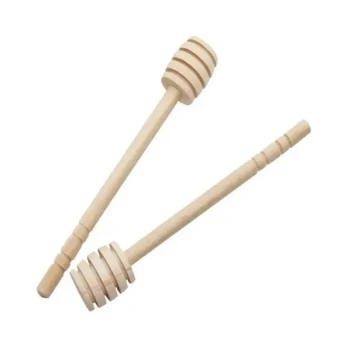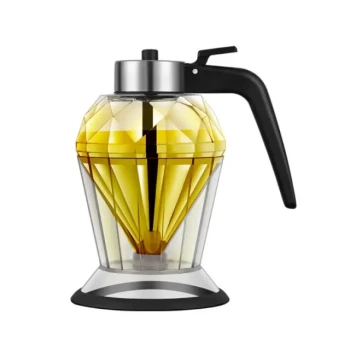Ultimately, honey's natural preservation properties stem from a unique combination of factors that make it an inhospitable environment for bacteria and other microorganisms. Its extremely low moisture content, acidic nature, and the presence of antibacterial enzymes contributed by bees work in concert to give it an incredibly long and stable shelf life.
Honey is one of nature's most effective preservatives because it attacks microbes on multiple fronts: it dehydrates them, creates an environment too acidic for them to survive, and actively destroys them with hydrogen peroxide.
The Core Mechanisms of Honey's Self-Preservation
Honey doesn't just resist spoilage; its very composition is designed to eliminate threats. This resilience is not due to a single property but a powerful synergy of three key characteristics.
The Impact of Low Moisture Content
Honey is a hygroscopic substance, meaning it naturally contains very little water but readily absorbs moisture from the air.
Its low water activity is its primary defense. When a bacterium or yeast cell lands on honey, the honey draws the water out of the microbe through osmosis, effectively dehydrating and killing it.
The Power of High Acidity
Honey is naturally acidic, typically having a pH between 3.2 and 4.5. This is due to the presence of organic acids, primarily gluconic acid.
This acidic environment is hostile to the vast majority of microorganisms, which require a more neutral pH to grow and reproduce.
The Role of Hydrogen Peroxide
Bees introduce an enzyme called glucose oxidase into the nectar they collect. When honey is slightly diluted (for example, when used on a wound), this enzyme activates.
It breaks down glucose sugars and, in the process, produces small but effective amounts of hydrogen peroxide, a well-known antimicrobial agent that inhibits bacterial growth.
Understanding the Vulnerabilities
While incredibly stable, honey is not entirely invincible. Its preservation properties can be compromised if not handled or stored correctly.
The Risk of Added Moisture
The most significant threat to honey is dilution. If the lid is left off in a humid environment, it will absorb moisture from the air.
If the water content rises above approximately 18-20%, dormant yeasts present in the honey can become active, leading to fermentation and spoilage.
The Process of Crystallization
Many people mistake crystallization for spoilage, but it is a natural process. Honey is a supersaturated solution of glucose and fructose sugars.
Over time, the glucose can separate from the water, forming crystals. This is not a sign of contamination and can be reversed by gently warming the honey.
The Danger of Botulism Spores
Honey can contain spores of the bacterium Clostridium botulinum. While harmless to adults and older children, an infant's immature digestive system cannot neutralize them.
This is why honey should never be given to children under one year of age, as the spores can germinate and cause infant botulism.
How to Maintain Honey's Integrity
Proper storage is simple but critical to ensuring honey's natural preservative qualities remain intact for years, or even decades.
Store in an Airtight Container
Always keep honey in a sealed, airtight container. This is the most crucial step to prevent it from absorbing atmospheric moisture, which could lead to fermentation.
Maintain a Stable Room Temperature
Store honey at a consistent room temperature. Refrigeration is unnecessary and will accelerate the natural process of crystallization, making it thick and difficult to use.
Use Clean Utensils
To prevent introducing foreign contaminants like bacteria or yeast, always use a clean, dry spoon when scooping honey from the jar.
Applying This to Your Needs
How you use and store honey depends on your primary goal.
- If your primary focus is long-term food storage: Prioritize keeping it in a sealed, airtight container in a dark, stable environment to prevent moisture absorption and degradation.
- If your primary focus is its antibacterial properties for topical use: Choose raw, unpasteurized honey, as the heat from pasteurization can damage the crucial glucose oxidase enzyme.
- If your primary focus is simply avoiding crystallization: Store it at a consistent room temperature, as temperature fluctuations are a key trigger for crystal formation.
By understanding its powerful natural defenses, you can ensure your honey remains a safe and stable product for years to come.
Summary Table:
| Key Factor | How It Preserves Honey |
|---|---|
| Low Moisture Content | Draws water out of microbes via osmosis, dehydrating and killing them. |
| High Acidity (pH 3.2-4.5) | Creates an environment too acidic for most microorganisms to survive. |
| Hydrogen Peroxide | An enzyme produces this antimicrobial agent when honey is slightly diluted. |
Ensure the purity and quality of your honey harvest with the right equipment. HONESTBEE supplies commercial apiaries and beekeeping equipment distributors with durable, wholesale-focused supplies designed to protect your product's natural integrity. From hygienic storage containers to efficient extraction tools, our products help you maintain honey's powerful preservation properties from hive to shelf.
Contact our experts today to discuss your wholesale beekeeping supply needs.
Related Products
- Stainless Steel Honey Press Wax Press with Tank
- High Quality Honey Dehumidifier Dryer Thickening Machine for Beekeeping
- Modern Honeycomb Pattern Wooden Honey Dipper for Stirring and Drizzling
- Natural Wood Honey Dipper for Tea Coffee and Desserts
- Premium Diamond-Faceted Glass Honey Dispenser
People Also Ask
- How does a stainless steel screw honey pump operate? A Guide to Gentle, High-Quality Honey Transfer
- Why is a honey press considered efficient and effective? Maximize Yield for Small-Scale Beekeeping
- What are the end products of using a honey press? Pure Honey and Valuable Beeswax
- What happens to the wax after pressing in a honey press? A Guide to Maximizing Your Hive's Yield
- What are the key features of a honey press? Maximize Yield with Durable, Efficient Extraction



















